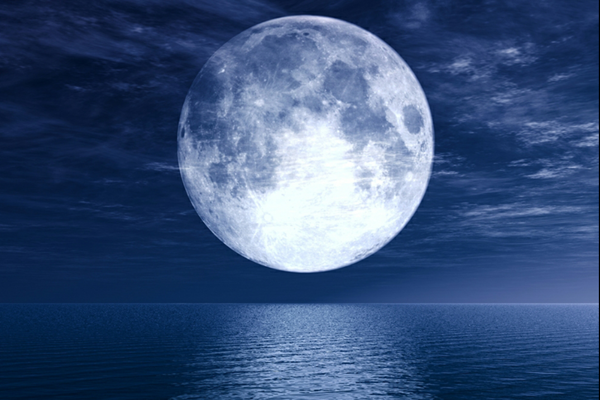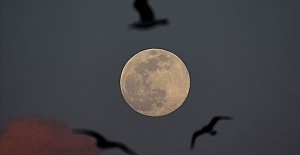Super moons bring with them 30% more light. That's a problem as it makes the meteors less visible. Still, the two events together make this a good few days to spend some time outside at night, says Ben Burress, an astronomer with the Chabot Space and Science Center in Oakland. The shower's peak will come in the hours before dawn Aug. 11-13, Burress, an astronomer with the Chabot Space and Science Center in Oakland, Calif.. "If people want to catch them, the early morning hours before dawn on Aug. 11, 12 and 13 are all fair game," said Burress. Look in the constellation Perseus, which is just to the left of the Pleiades, the Seven Sisters constellation, in the northeastern portion of the sky. Normally, a bright moon would dim the visibility of meteors, but the Perseids have bright meteors, so "it's not a complete washout," Burress says. "But it won't be nearly as good as it would if the moon wasn't up." Another option is to look as night falls, when the moon is low in the east, according to Alan MacRobert, senior editor at Sky & Telescope magazine.
If you're lucky, you might see some Earth-grazing Perseids. These are unusually long and graceful meteors, less frequent but quite lovely.
This year's Perseid shower won't be the wild, showy 80 meteors per hour that can happen when they arrive during moonless nights. Even so, a shooting star or two reminds us that looking heavenward is always rewarding.
And if you don't see a meteor, you'll still get to see a super moon which makes it is well worth going outside.
Astronomers call these "perigee full moons," though in the past few years, they've taken on the popular name "super moons," according to EarthSky.com.
Super moons occur when a full moon and the Earth are closest in their orbits.
The moon will be 190,000 miles from the Earth, 20% closer than its farthest point, when it is 240,000 miles away.
"That means it's maybe 10% to 15% larger on average than a full moon and about 30% brighter," Burress says.
The moon's closeness isn't just something to look up for. It also brings extra high and low tides, which make it a great time for beachcombing.


 Prime Minister Keir Starmer's 2025 Easter message
Prime Minister Keir Starmer's 2025 Easter message After Nesil Caliskan a by-election will be held in Jubilee ward in Enfield
After Nesil Caliskan a by-election will be held in Jubilee ward in Enfield Publishing the analysis, Labour’s Cllr Ergin Erbil said Everybody in Enfield deserves basic rights
Publishing the analysis, Labour’s Cllr Ergin Erbil said Everybody in Enfield deserves basic rights Gaza-Israel conflict Statement from Cllr Ergin Erbil, Leader of Enfield Council
Gaza-Israel conflict Statement from Cllr Ergin Erbil, Leader of Enfield Council The European Union called on Turkey to uphold democratic values
The European Union called on Turkey to uphold democratic values Turkish citizens in London said Rights, Law, Justice
Turkish citizens in London said Rights, Law, Justice The Council of Turkish Cypriot Associations Geneva response letter
The Council of Turkish Cypriot Associations Geneva response letter Sustainable Development and ESG, Will This Become the Course for Turkic World
Sustainable Development and ESG, Will This Become the Course for Turkic World The 'Prince of Paris' has impressed in his first EuroLeague season
The 'Prince of Paris' has impressed in his first EuroLeague season Saran Media And Euroleague Basketball Extend Media Rights Partnership for Four More Years
Saran Media And Euroleague Basketball Extend Media Rights Partnership for Four More Years Will Rangers be Jose Mourinho’s next victim?
Will Rangers be Jose Mourinho’s next victim? Jose Mourinho's Fenerbahce face Rangers on Thursday
Jose Mourinho's Fenerbahce face Rangers on Thursday Barclays has become the biggest UK lender so far to cut mortgage rates
Barclays has become the biggest UK lender so far to cut mortgage rates THE SPRING STATEMENT EXPLAINED, UK ECONOMIC OUTLOOK AND GROWTH FORECASTS
THE SPRING STATEMENT EXPLAINED, UK ECONOMIC OUTLOOK AND GROWTH FORECASTS Launch of Made in Enfield gift shop to celebrate local artists and designers
Launch of Made in Enfield gift shop to celebrate local artists and designers Trial used smart Wi-Fi sensors for live building occupancy data to optimise
Trial used smart Wi-Fi sensors for live building occupancy data to optimise




















